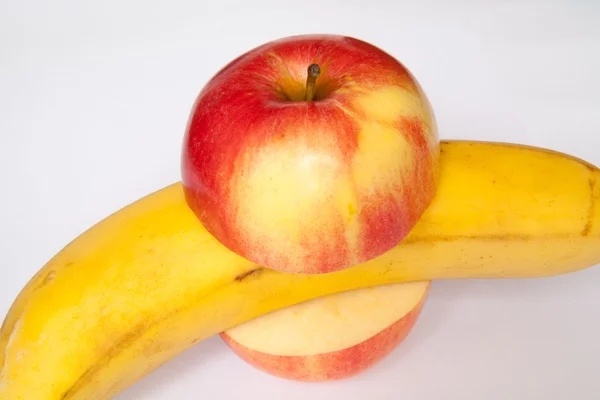
Apple Just Quietly Weaponized Open-Source AI: The Pico-Banana-400K Wake-Up Call
How Apple's surprise release of 400,000 real-image dataset for text-guided image editing exposes the synthetic data addiction crippling multimodal AI progress.
While the AI world obsesses over reasoning models and larger language contexts, Apple just dropped a tactical nuke in the dataset wars, and barely anyone noticed. Pico-Banana-400K represents a fundamental shift in how we approach multimodal AI training, and the implications for the industry are staggering.
Forget synthetic data generation, this 400,000-image dataset is built entirely from real photographs sourced from the OpenImages collection. While competitors chase scale through synthetic pipelines, Apple took a different path: quality-first, real-world data with systematic quality control at a scale we haven’t seen before.

The Data Foundation That Changes Everything
What makes Pico-Banana-400K genuinely revolutionary isn’t just the scale, it’s the methodology. The dataset was constructed using Apple’s internal Nano-Banana model to generate image edits, then everything went through Gemini 2.5 Pro ↗ as an automated visual judge for quality assurance. Every single image was scored on instruction compliance, realism, and preservation, only the top-tier results made the cut.
Here’s where Apple’s approach deviates from conventional wisdom: instead of chasing millions of mediocre examples, they focused on systematic curation through a 35-category editing taxonomy that ensures comprehensive coverage of edit types. The dataset includes:
- 258K single-turn edits for supervised fine-tuning
- 72K multi-turn sequences for complex sequential reasoning and planning
- 56K preference pairs comparing successful vs. failed edits for alignment research
- Dual instruction formats with both detailed training prompts and concise human-style commands
This structure makes Pico-Banana-400K the first dataset that explicitly addresses the entire training pipeline, from simple edits to complex multi-step reasoning and preference optimization, all built on real photographic data rather than synthetic approximations.
The Unspoken Quality Problem With Synthetic Data
The dirty little secret of multimodal AI development? Most “open” datasets rely on synthetic generations that introduce fundamental quality issues. When you train on synthetic data, you’re effectively learning from approximations of approximations, the visual equivalent of training a language model on simulated conversations rather than actual human dialogue.
Apple’s choice to use real photographs from OpenImages ↗ matters more than most researchers realize. Real images contain the messy complexity of actual photographs, unpredictable lighting, realistic textures, and the subtle interactions between objects that synthetic generators still struggle to replicate consistently.
The quality control metrics are telling: automated scoring via Gemini 2.5 Pro evaluated each edit across instruction compliance (40%), seamlessness (25%), preservation balance (20%), and technical quality (15%). Any edit scoring below approximately 0.7 was discarded, and failed attempts were preserved as negative examples for preference learning.
Multi-Turn Flexibility: Where Most Models Fall Short
The 72K multi-turn sequences highlight Apple’s understanding of what comes next in multimodal AI. Most current models struggle with sequential edits because they lack training data that captures how edits build upon each other in natural workflows.
In Pico-Banana-400K’s multi-turn examples, each session contains 2-5 consecutive edits with referential continuity. If turn one adds a hat to a cat, turn two might reference “change its color”, requiring the model to track context across edits. This directly addresses one of the biggest weaknesses in current image editing AI, the inability to maintain coherent context through multiple modifications.
The practical applications are enormous: think about workflows where you might want to “add a new object, adjust the lighting, resize something, and then apply a filter” as a natural sequence. Current models treat these as independent operations, Pico-Banana-400K provides the training foundation to handle them as connected actions.
Systematic Evaluation Matters: Success Rates Tell the Real Story
The performance analysis reveals exactly where current models excel, and where they’re still fundamentally broken. According to the dataset analysis published in the technical paper ↗, some edit types consistently outperform others by significant margins:
-
Easy wins: Global style transfers achieve success rates above 90%, with “strong artistic style transfer” hitting 93.4% success rates. These operations reshape global textures without requiring precise spatial reasoning.
-
Moderate performance: Object removal and category replacement hover around 83% success, while scene-level modifications like seasonal changes achieve about 80% reliability.
-
Hard problems remain: Precise spatial manipulation shows exactly why we need better datasets. Object relocation struggles at just 59.2% success, while text operations like changing font style barely reach 57.6% reliability.
These numbers expose the current ceiling of multimodal AI, we’re great at global transformations but still fundamentally limited when it comes to precise spatial reasoning and symbolic manipulation.
Apple’s Open-Source Gambit: Why This Changes Everything
The prevailing sentiment across developer forums suggests Apple’s move toward open-sourcing this dataset represents a strategic pivot. For a company legendary for its walled garden approach, releasing such a comprehensive dataset under Apple’s research license feels like a deliberate move to shape the broader ecosystem.
What’s the strategic advantage? Apple benefits immensely from small, efficient open-source models that can run locally on their hardware. By providing the high-quality training data foundation, they’re effectively subsidizing the development of models perfectly suited for on-device AI, creating an ecosystem that plays directly to their hardware strengths around privacy and local computation.
The dataset’s estimated production cost of approximately $100,000 USD reveals another truth: quality curation and systematic validation matter more than sheer scale. While competitors chase billion-scale synthetic datasets, Apple demonstrated that thoughtful construction at a fraction of the scale produces fundamentally better training material.
Beyond Benchmarks: What This Means for Real Applications
Developers working on practical AI applications should pay close attention to the data structure choices Apple made:
Preference pairs for alignment: The 56K preference examples provide exactly what’s needed for Direct Preference Optimization (DPO) training and reward modeling. This means models trained on this dataset can learn not just what works, but what works better, a critical advancement for practical deployment.
Dual instruction formats: The dataset provides both detailed training-style prompts and concise human-style commands. This acknowledges that what works during training isn’t always what users actually type, and it enables research into instruction rewriting and summarization.
Real-world grounding: Unlike synthetic datasets that often introduce domain shift problems, training on real photographs means models learn from the actual distribution of images they’ll encounter in production environments.
The Future Backlash: Implications for the Industry
Apple just reset expectations for what constitutes “high-quality” training data. The days of throwing synthetic data at AI problems and hoping for the best might be numbered. The systematic taxonomy, rigorous quality scoring, and multi-faceted structure of Pico-Banana-400K establish a new baseline that other organizations will now need to match.
We’re likely to see immediate pressure on competitors to release similarly curated datasets, but more importantly, we’ll see a recognition that quality curation beats scale, especially for multimodal applications where subtle artifacts and domain gaps can wreck production systems.
The quiet release suggests Apple understands something many AI companies still don’t: sometimes the most powerful moves aren’t flashy model demos, but foundational infrastructure that changes how everyone builds. Pico-Banana-400K doesn’t just give researchers better training data, it gives them a blueprint for how to build better datasets, period.
The era of synthetic data dominance might just have ended with a single GitHub repository from Cupertino.



